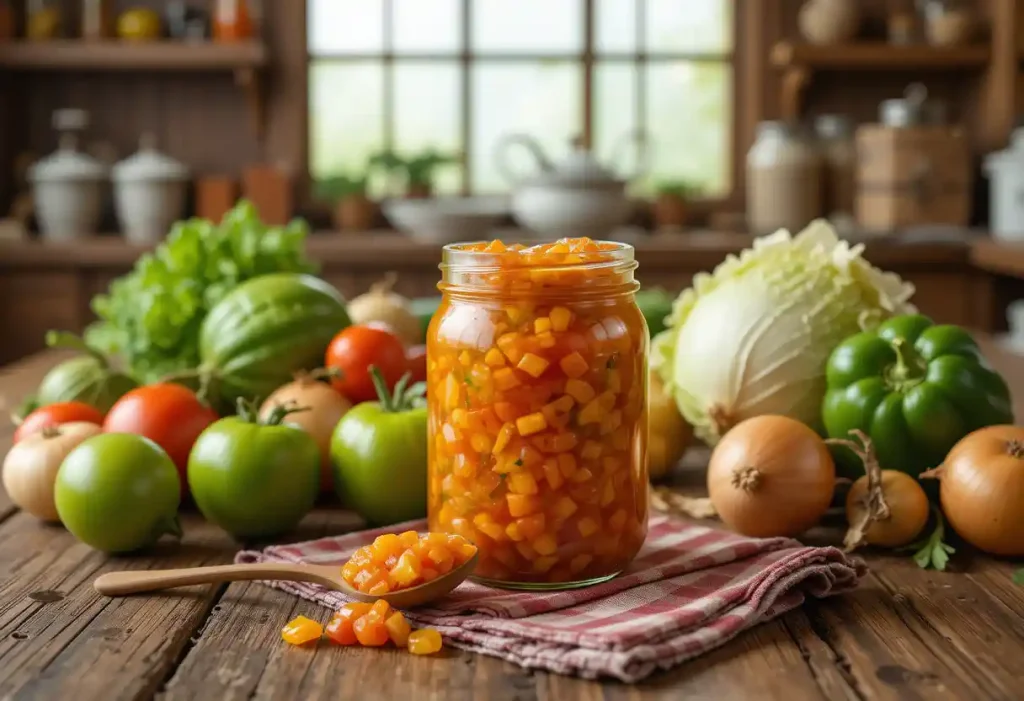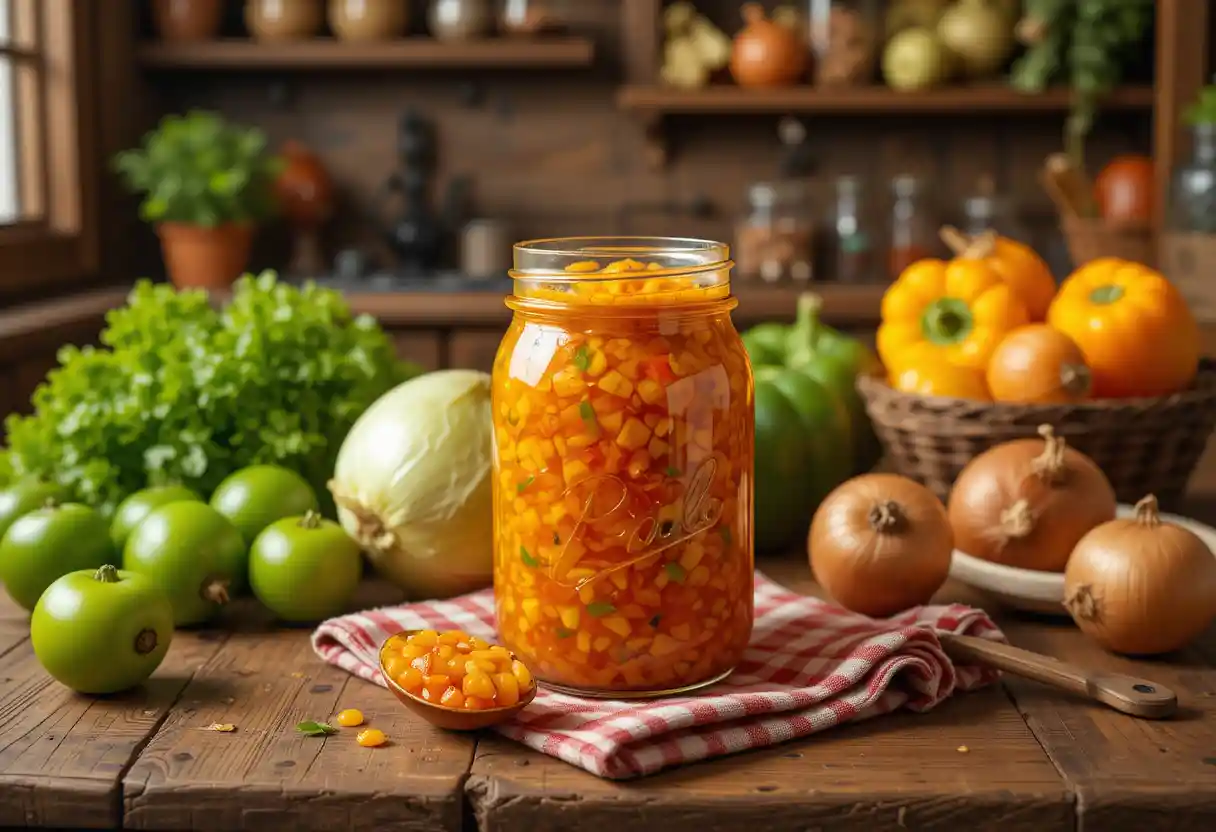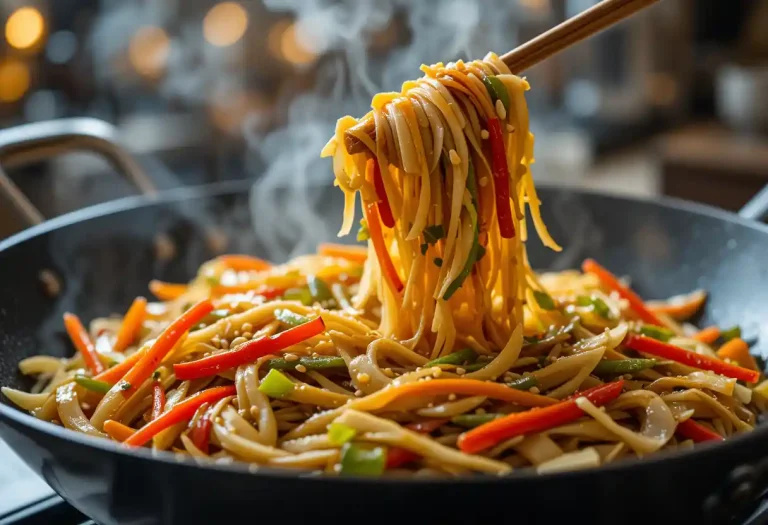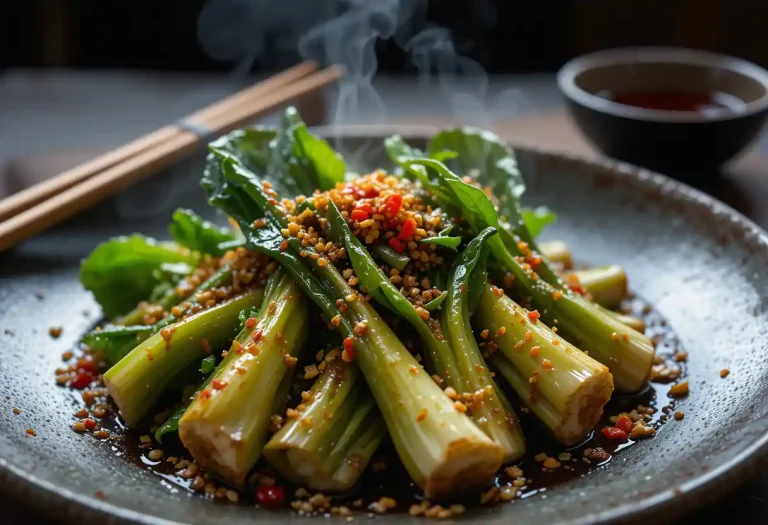Old-Fashioned Chow Chow: A Classic Southern Relish
If you have ever savored the tangy, sweet, and slightly spicy bite of chow chow relish, you know that it is more than just a condiment—it’s a culinary treasure with deep Southern roots. This vibrant and versatile relish has been a staple in pantries for generations, serving as a flavorful accompaniment to everything from pinto beans to smoked meats. In this post, we’ll take a deep dive into the history, ingredients, preparation, and various uses of this old-fashioned Southern favorite.
The History of Chow Chow
Chow chow relish has a rich and varied history, with origins that can be traced back to multiple cultural influences. Some historians believe that the dish was introduced to the American South by French Acadian immigrants who settled in Louisiana, while others suggest that Chinese railroad workers played a role in its early development. Regardless of its precise origins, chow chow became a beloved part of Southern cuisine, especially among home gardeners and farmers looking to preserve their summer harvest.
As a pickled relish, chow chow was an essential way to extend the shelf life of surplus vegetables before the advent of modern refrigeration. Families would prepare large batches in late summer or early fall, canning jars of chow chow to enjoy throughout the year. Over time, different regional variations emerged, with some recipes favoring a sweeter profile and others leaning toward a spicier kick.

Key Ingredients in Traditional Chow Chow
One of the hallmarks of chow chow is its unique combination of vegetables and seasonings. While recipes can vary widely by region and family tradition, some common ingredients include:
- Green Tomatoes – The unripe tanginess of green tomatoes provides a robust foundation for the relish.
- Cabbage – Adds a subtle sweetness and crisp texture.
- Onions – Provide depth and a slight pungency to balance the sweetness.
- Bell Peppers – Often red and green for color contrast and a mild sweetness.
- Hot Peppers – For those who enjoy a spicy kick, cayenne or jalapeños are often included.
- Vinegar – The backbone of the pickling process, usually white or apple cider vinegar.
- Sugar – Balances the acidity and enhances the natural flavors of the vegetables.
- Mustard Seeds and Turmeric – Give chow chow its characteristic yellow hue and earthy undertones.
- Celery Seed and Bay Leaves – Infuse additional layers of flavor.
- Salt and Pepper – Essential for seasoning and preservation.
How to Make Traditional Southern Chow Chow
Making chow chow at home is a labor of love, but the process is straightforward and rewarding. Here’s a step-by-step guide to crafting your own batch of this old-fashioned relish:
Step 1: Preparing the Vegetables
Start by washing and finely chopping the vegetables. Some recipes call for shredding the cabbage and dicing the other vegetables into small, uniform pieces. A food processor can speed up the chopping process, but many traditionalists prefer to do it by hand to achieve the perfect texture.
Step 2: Salting and Draining
Once the vegetables are chopped, mix them in a large bowl with salt and let them sit overnight. This helps draw out excess moisture and ensures a firmer texture in the finished relish. The next day, drain and rinse the vegetables thoroughly to remove excess salt.
Step 3: Cooking the Relish
In a large pot, combine the drained vegetables with vinegar, sugar, and spices. Bring the mixture to a boil, then reduce the heat and simmer for about an hour, stirring occasionally. The goal is to allow the flavors to meld while the vegetables retain some of their crunch.
Step 4: Canning for Long-Term Storage
While the relish is still hot, carefully ladle it into sterilized canning jars, leaving about ½ inch of headspace. Seal the jars with lids and process them in a boiling water bath for 10-15 minutes to ensure they are properly preserved. Once cooled, store the jars in a cool, dark place.
How to Enjoy Chow Chow
Chow chow relish is an incredibly versatile condiment that can elevate a wide range of dishes. Here are a few classic ways to enjoy it:
- With Beans – Perhaps the most traditional pairing, chow chow adds a zesty kick to a bowl of slow-cooked pinto or black-eyed peas.
- On Hot Dogs and Burgers – A spoonful of chow chow brings brightness and crunch to grilled favorites.
- With BBQ and Smoked Meats – The tangy acidity of chow chow cuts through the richness of pulled pork, brisket, and smoked sausages.
- As a Topping for Greens – A Southern staple, collard greens get an extra layer of flavor with a dollop of chow chow.
- On Deviled Eggs or Potato Salad – Adds complexity and a hint of sweetness to classic picnic dishes.
- With Crackers and Cheese – A surprisingly delicious addition to a charcuterie board.
Chow Chow Variations Across the South
While the core ingredients remain the same, different regions have their own unique takes on chow chow. Here are a few notable variations:
- Sweet Appalachian Chow Chow – Typically sweeter with a milder spice level, often found in the Appalachian region.
- Spicy Louisiana Chow Chow – Features bolder heat, sometimes incorporating cayenne and Creole seasonings.
- Pennsylvania Dutch Chow Chow – A tangier version that includes additional vegetables like carrots and cauliflower.
- Texan Chow Chow – Often leans spicier with jalapeños or habaneros, perfect for Tex-Mex cuisine.
Preserving a Southern Tradition
Chow chow relish is more than just a condiment; it’s a link to the past, a way of preserving traditions, and a delicious way to add depth and character to everyday meals. Whether you’re making a batch from a cherished family recipe or experimenting with new variations, the act of preparing chow chow is a tribute to Southern culinary heritage.
As more people seek out homemade, small-batch, and locally sourced foods, the popularity of chow chow continues to rise. This old-fashioned relish, once a necessity for preserving garden vegetables, has now become a gourmet delight that food lovers across the country appreciate.
So the next time you find yourself with an abundance of fresh produce, consider making your own chow chow relish. Not only will you be carrying on a rich tradition, but you’ll also be creating a flavorful condiment that brings a taste of the South to every meal.






